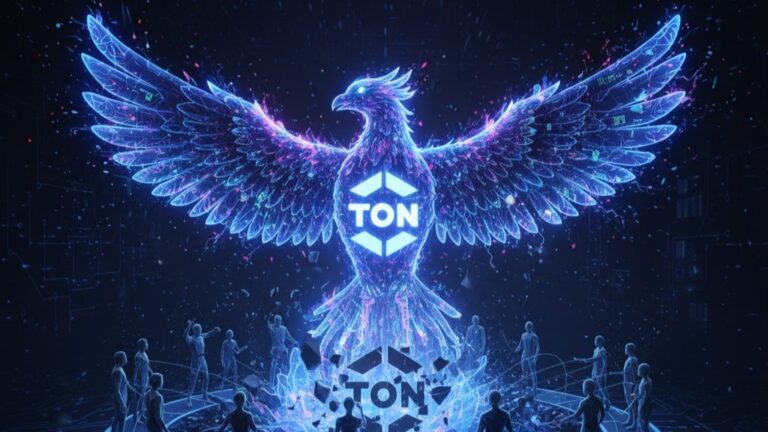What Is Pepe (PEPE)? Complete Guide to the Meme Coin
Discover Pepe (PEPE), the meme coin inspired by internet culture. Learn its history, tokenomics, community impact, and future potential in this complete guide.
By Yaser | Published on September 26, 2025
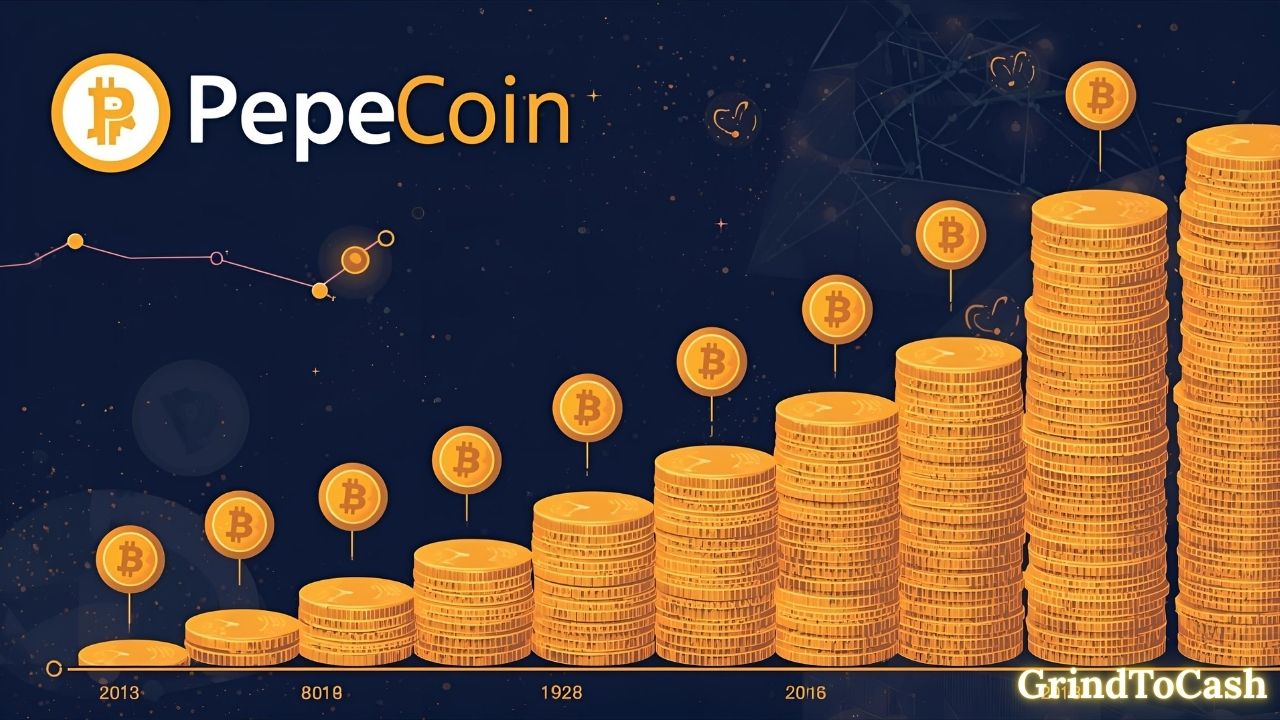
Origins and Early History of Pepe
Pepe began as a meme-token idea that capitalized on the widespread popularity of the “Pepe the Frog” meme. The PEPE token was announced and launched in April 2023 on Ethereum as a community-driven meme project. Its early growth was powered by social media momentum, viral traders, and retail liquidity. From day one the project leaned into meme culture rather than formal corporate structure. That launch style helped PEPE spread fast among retail traders, producing large short-term price moves and a highly speculative holder base.
Meme roots — why Pepe the Frog mattered
The Pepe token draws cultural meaning from the Pepe the Frog meme, which has been popular online for years. Using a known meme lowered the marketing cost and created instant recognition. Because memes travel fast, early tweets, memes, and influencer shouts concentrated interest and on-chain demand. However, meme roots also create volatility: cultural hype can fade quickly, so long-term value requires more than recognition.
Launch mechanics and community spread
PEPE launched with all tokens minted at genesis and a distribution method that favored open market trading. The early mechanics intentionally appealed to penny-sized traders who could buy large nominal amounts of tokens. Social channels, meme pages, and liquidity pools amplified interest. This grassroots distribution produced a highly fragmented holder base and large intraday volume, a double-edged sword for price stability.
Early volatility and the retail-driven pattern
Because of the meme narrative and the low per-token price, retail traders often treated PEPE as a fast speculative bet. Rapid inflows and outflows caused huge intraday swings. Early winners created attention loops — more buyers, more headlines, bigger moves — and then periods of sharp retracement when momentum faded. For GrindToCash readers, understanding this retail-driven pattern is key to sizing risk.
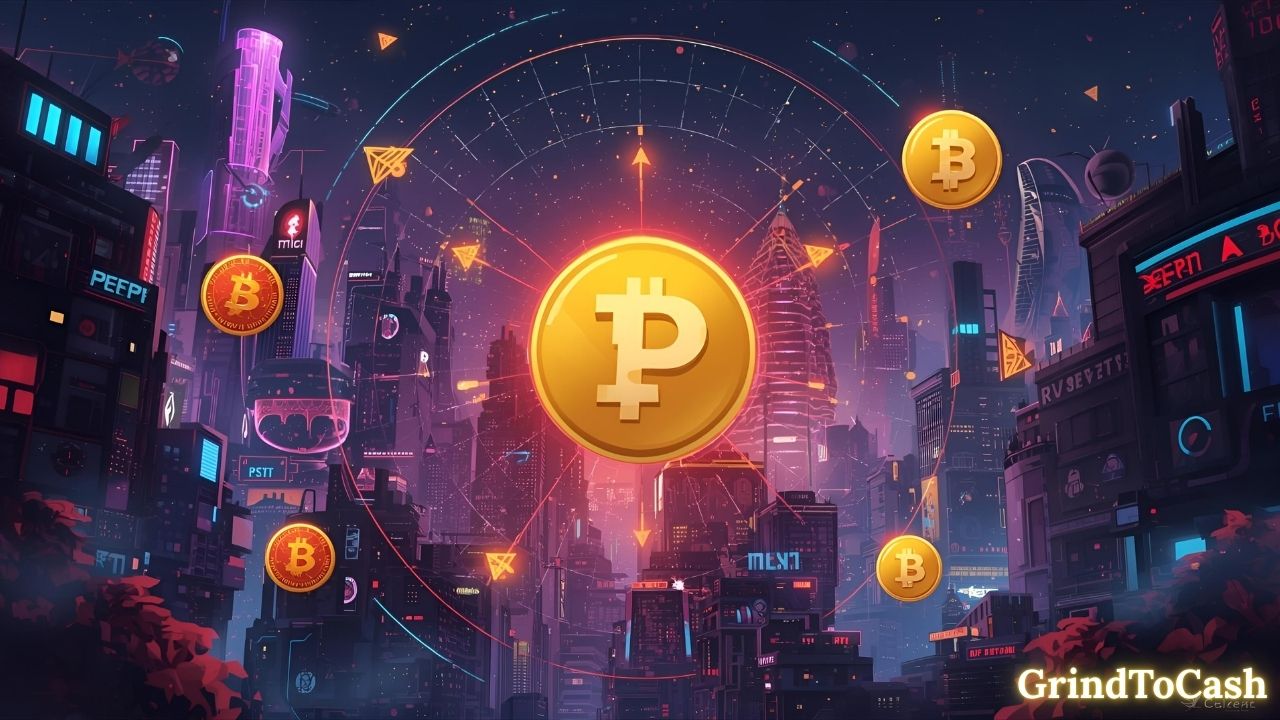
The PEPE Ecosystem: Tokens, Tools, and Community Projects
Unlike fully developed protocols, PEPE’s early life focused on community and liquidity rather than layered product suites. Nevertheless, the ecosystem evolved with decentralized listings, NFT projects themed around Pepe imagery, and third-party tooling that built on the token. Community developers and artists created playful projects that combined collectibles and token incentives. Over time, the ecosystem’s health depends on developer activity, marketplace traction, and whether creative efforts convert meme interest into repeated on-chain use — not just one-off trades.
NFTs, collectible drops, and cultural projects
Several community artists and teams launched Pepe-themed NFTs and collectible campaigns. These drops aimed to monetize creative culture and reward early supporters. When NFTs find real collectors and utility, they can increase token utility — for example, by enabling exclusive access or staking perks. However, NFT markets are uneven; not every drop keeps value, so evaluate art roadmap, rarity, and marketplace liquidity.
Third-party tools and DeFi integrations
DeFi builders sometimes add meme tokens to AMMs, dashboards, or yield farms. These simple integrations increase liquidity and make trading easier across exchanges. Yet integrations also raise smart-contract risks and impermanent loss exposure. GrindToCash recommends checking audits, TVL, and contract age before trusting DeFi tools that interact with meme tokens like PEPE.
Community-run initiatives and governance experiments
Because PEPE began community-first, grassroots initiatives often drive new features or campaigns (burn tools, marketing pushes, charity events). These efforts can be effective, but they are uneven and depend on volunteer energy. Community governance experiments can show potential for decentralization — but without formal governance structures, execution and accountability remain uncertain.

Tokenomics, Supply Structure, and On-Chain Mechanics
PEPE’s supply situation is an important technical fact: the token was minted in a very large fixed supply at genesis. The stated total supply is in the hundreds of trillions (reported figures show ~420.69 trillion tokens), with all tokens created at launch and no ongoing minting. This extreme supply scale makes per-token prices tiny and psychology-driven. Supply concentration, burns, and exchange flows are therefore crucial on-chain metrics: they influence perceived scarcity, but supply alone does not guarantee price appreciation without real demand.
Total supply and why “trillions” matter
A massive total supply means a tiny per-token nominal price. Psychologically, very low token prices attract small-dollar retail buyers who can buy large nominal quantities. But in practice, value depends on market cap and demand. Therefore, watch the circulating supply, top-holder concentration, and large transfers — not just the raw token count — to understand real market dynamics.
Burns, removals, and scarcity efforts
Some community members and services run token burn campaigns (sending tokens to dead addresses) to reduce circulating supply. Burns can create headlines and short-term bullish narratives, but the price effect depends on scale versus total supply and concurrent buyer demand. True deflationary impact requires sustained demand and significant cumulative burns relative to circulation.
On-chain indicators to monitor for PEPE
Key metrics include exchange inflows/outflows, top-wallet movements, active addresses, and liquidity pool depth. Rising exchange inflows often signal selling pressure, while large off-exchange transfers to cold wallets can indicate accumulation. Combine these metrics with volume and price action to form a clearer view than price alone.

Founders, Leadership, and Controversies
PEPE’s early narrative included anonymous or semi-anonymous actors and later reporting on individuals tied to the project. Questions about founders, profit allocation, and intellectual property surfaced in media threads. Such controversy is common for meme tokens because they begin without formal corporate entities or clear revenue-sharing. For investors, the presence of murky leadership or disputed founder stories increases execution and reputational risk. Always seek verifiable on-chain evidence, audited treasury controls, and transparent team disclosures before assuming project durability.
Known claims about founders and the public record
Over time, various investigative threads linked PEPE’s initial activity to named individuals in the broader crypto community. Some reports allege opportunistic behavior and personal profit stories. While attribution can matter for investor trust, on-chain evidence and transparent treasury actions are stronger proof points than rumors. GrindToCash encourages readers to verify claims against on-chain transactions and credible reporting.
Intellectual property and the meme’s origin story
Using a popular meme raises IP questions: Pepe the Frog was created by artist Matt Furie, and projects that borrow the image have faced scrutiny in the past. Legal or ethical concerns don’t always stop token trading, but they can create headwinds if rights holders object. Investors should be aware that IP disputes can add regulatory or reputational risk to meme tokens.
Community response and accountability mechanisms
When controversies arise, strong communities sometimes self-correct with transparency pushes, audits, and clarified governance. Conversely, lack of clear accountability increases tail risk. For prudent investing, favor projects that publish multi-signature lists, treasury transparency, and clear development roadmaps.
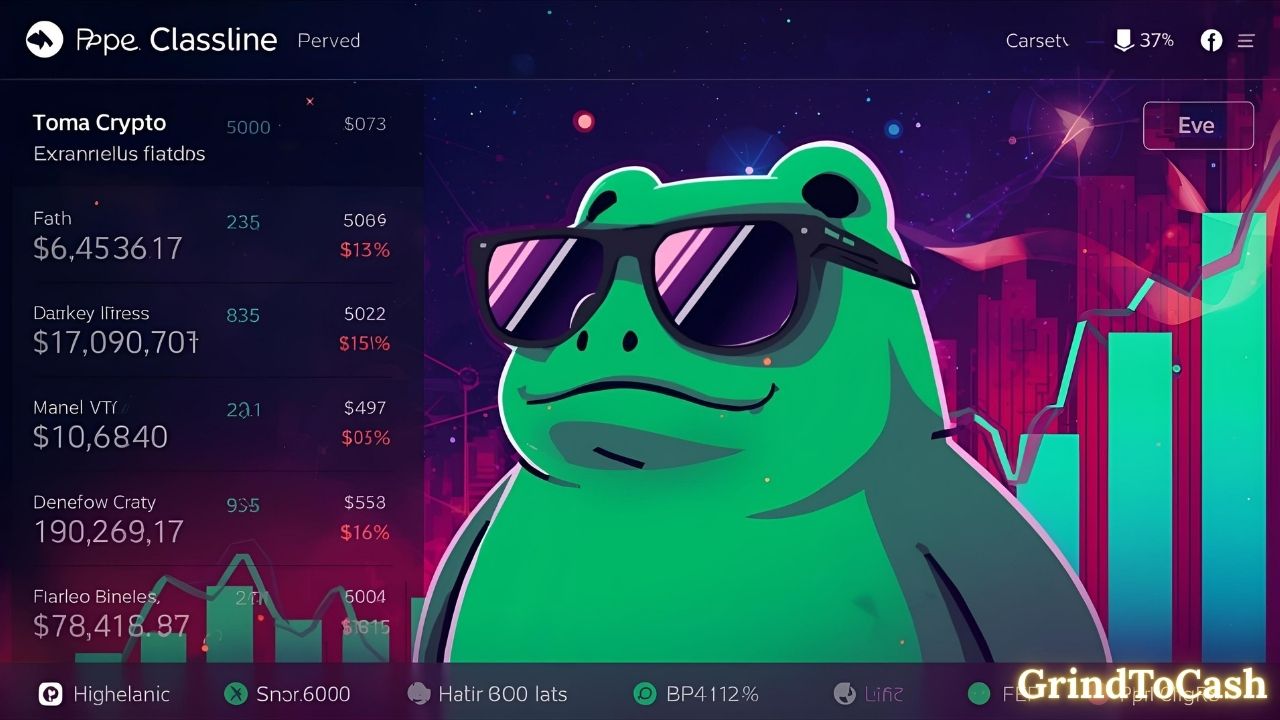
Major Milestones, Listings, and Market Performance
PEPE experienced dramatic attention spikes, listings on major exchanges, and huge intraday volumes at different points. Listings and exchange liquidity are key milestones because they increase access and trading volume. Market data platforms track circulating supply and market capitalization; for example, coin trackers show PEPE with a multi-billion dollar market cap during active cycles. While listings and market cap are important validation signals, remember they reflect market interest — not guaranteed product-market fit or utility.
Exchange listings and why they matter
Being listed on large centralized exchanges improves liquidity and widens the buyer base. Listings can trigger short-term price spikes as new buyers enter. However, most lasting value depends on sustained demand and real use-cases; listings are an access milestone, not a long-term guarantee.
Price history and volatility profile
PEPE’s price history shows periodic parabolic rallies followed by sharp retracements. This volatility stems from retail-driven speculation, meme virality, and market cycles. For traders, such volatility creates both opportunity and risk; for investors, disciplined sizing and exit rules are critical.
Market-cap dynamics and what to watch
Market-cap peaks represent moments of peak enthusiasm; drawdowns show where sentiment faded. Track market-cap relative to on-chain activity (active wallets, tx volume) to see whether price moves are backed by usage or just speculative flows.

Benefits, Use Cases, and Common Criticisms
Benefits of PEPE are mostly cultural and speculative: strong brand recognition, low per-token nominal price, and an engaged meme-focused audience. Creative projects and NFTs can add limited utility, and some community incentives can drive short-term demand. On the downside, critics point to huge initial supply, holder concentration, strong correlation with market sentiment, and the fragile nature of meme-driven value. In short, PEPE can be attractive for speculative traders and collectors, but it lacks the steady revenue models and developer-driven roadmaps found in more established protocols.
Cultural value and network effects
Memes create network effects: attention begets attention. If a meme community stays active, it can support repeated campaigns, collectible projects, and a culturally driven economy. These dynamics are powerful, but they require new creative inputs to sustain interest.
Speculation vs. fundamental use-case
PEPE’s primary use case has been speculation and collectible culture. Real utility (payment rails, stable usage, revenue streams) remains limited compared with major platforms. When assessing potential, distinguish between hype-driven rallies and persistent product adoption.
Criticisms investors should weigh seriously
Large supply, lack of formal governance, and founder opacity are recurring critiques. Also, meme tokens are especially vulnerable to social-media cycles. For conservative portfolios, keep PEPE-sized exposure small and treat it as a high-risk position.
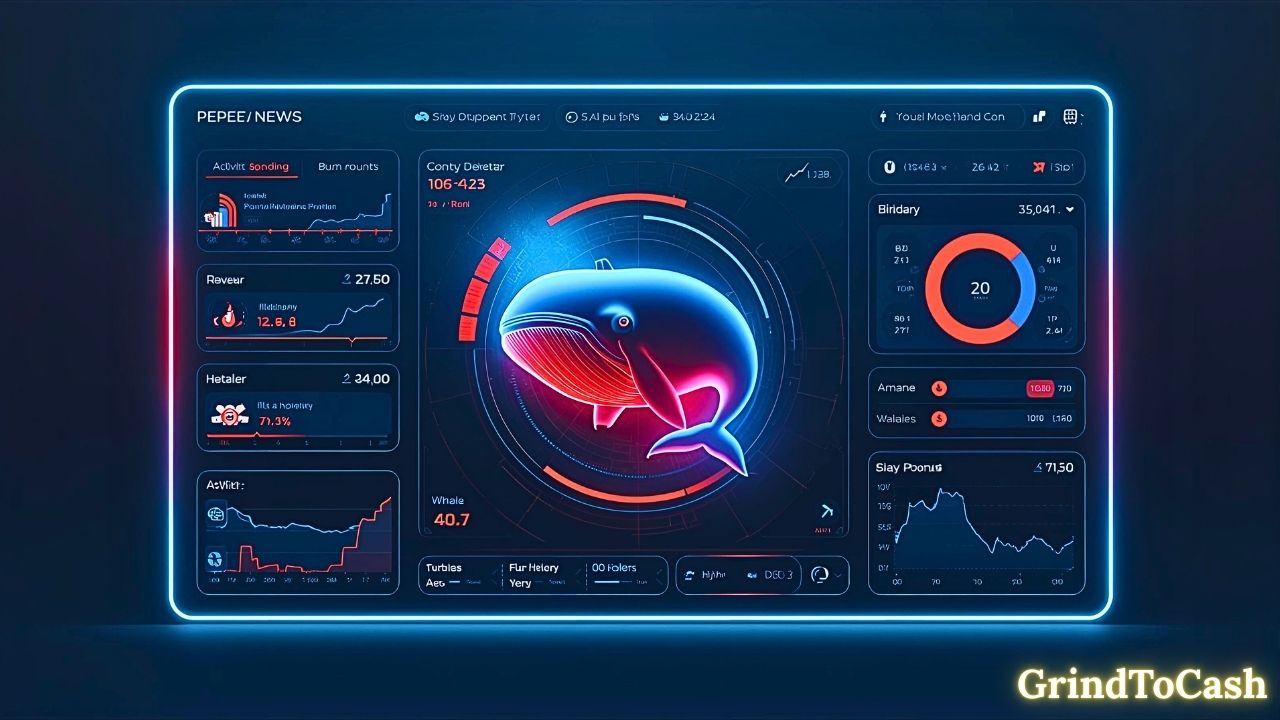
Latest News, On-Chain Signals, and Today’s Context
As of the latest market reports, the PEPE community is watching burn activity, whale accumulation, and small presale/news cycles tied to meme spin-offs. Some analytics services and niche outlets flagged potential breakout technicals and presale activity for related projects, and on-chain trackers showed both accumulation and exchange flow spikes. These mixed signals mean the market is indecisive: supply-side burns or whale buys can be bullish, but macro pressure and fading social attention can offset those moves. Monitor multiple signals, not headlines alone.
Recent signals — burns and whale movements
Recent analytics reported notable token burns and transfers involving large wallets at different times. While burns can reduce supply headline-wise, real pricing impact requires sustained demand. Whale accumulation off-exchange suggests some holders intend to hold long-term; conversely, rising exchange balances often precede selling pressure.
New presales and spin-off projects to watch
The meme ecosystem spawns new projects (presales, forks, and “next Pepe” tokens). Some presales try to package improved tokenomics or Layer-2 features. These spin-offs can attract capital away from PEPE or feed renewed interest depending on execution quality. Always research presale teams and token structures carefully.
Market context — macro and sentiment drivers
Meme coins are highly sensitive to macro risk appetite. When risk-on sentiment rises, meme coins can rally; when risk-tightening hits, they can fall quickly. Use broad indicators (fear & greed, BTC price moves, liquidity trends) to gauge whether small-cap meme coins will likely follow broader market patterns.

How GrindToCash Readers Should Approach PEPE (Strategy & Safety)
If you’re a GrindToCash reader, treat PEPE as a high-risk, speculative asset. First, size any position modestly — never allocate more than you can afford to lose. Second, prefer dollar-cost averaging for long-term exposure rather than guessing tops or bottoms. Third, secure core holdings in cold wallets and keep only active trading balances on exchanges. Fourth, combine on-chain metrics (burns, flows, wallet growth) with developer updates before changing exposure. Finally, use GrindToCash tools and calculators to set position sizing, stop-loss rules, and exit plans.
Entry and sizing rules for speculative meme tokens
Use small, recurring buys to reduce timing risk (DCA). Cap total exposure as a percentage of your crypto allocation. For active traders, set tight position-sizes and predefined stop-losses to avoid catastrophic drawdowns — the meme market is unforgiving.
Security and custody best practices
Move long-term holdings to hardware wallets and enable strong security on all platforms. Avoid leaving large sums on centralized exchanges. Verify contract addresses and use audited bridges for transfers. In stressed markets, access to funds matters more than small daily gains.
How to use GrindToCash resources for PEPE decisions
Leverage GrindToCash for on-chain dashboards, burn trackers, and step-by-step risk checklists. Use our templates to calculate position size and test hedges. GrindToCash curates reliable updates and converts complex metrics into simple action items so you can act with discipline rather than emotion.

